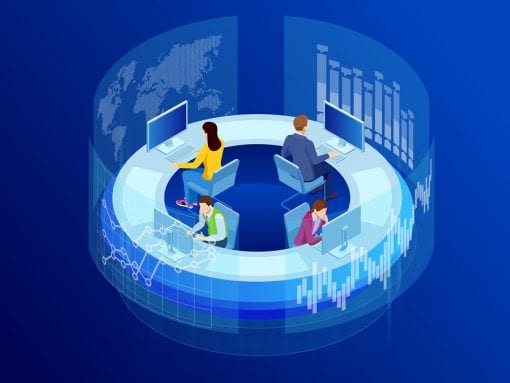Strategic Intelligence and the 2019 National Intelligence Strategy
Recently, the Office of the Director of National Intelligence released their 2019 National Intelligence Strategy. The Director of National Intelligence, Daniel R. Coats, stated in his introduction, the purpose of this strategy boils down to a singular goal: “to ultimately keep our Nation safe.” The Intelligence Community (IC) is therefore charged with venturing out into the known and unknown, the safe and dangerous, to collect and analyze the “capabilities, activities, and intentions of states and non-state entities” with the ultimate goal of protecting U.S. national security. This information is used to identify trends and developments to better plan for issues that may arise in the future (Anticipatory Intelligence).
Without the information gathered IC, the safety of our country would quickly erode, falter, and crumble. It behooves the IC, then, to use whatever tools and solutions they can find to give them a competitive advantage in the global arena of information. Fognigma is such an advantage.
Where Does the IC Look?
Since all communication and online activity produces information, the IC has a vast landscape of information to scrutinize. One of the easiest ways to gather data about a group of people is to monitor and study social media. Ah, social media – those freeform beds of communication where people express their thoughts, wants, and observations, quite often with photos and video. Social media has created a culture wherein people feel the need to share everything. For the IC, this is a veritable feast of information.

But it’s not that easy. For one thing, many regions and countries have their own social media platforms — often so government agencies can monitor their populace. An outside observer probably won’t be able (or want) to create an account or access another country’s social media — the data collection would be too overt and state-based social media platforms often block outside IP addresses. It would look bad (read: suspect), for example, for an account on a Russian social media site to have a U.S.-based IP address. Fognigma gives the IC many advantages to circumnavigate these issues. How? Well…
Fognigma Gives the IC an Advantage
There are quite a number of ways Fognigma supports the IC’s mission as spelled out in the 2019 National Intelligence Strategy. But first, a quick Fognigma primer. Fognigma is patented enterprise software that gives agencies the ability to create invisible and encrypted cloud-based networks built from strategically leased virtual machines. These networks are dynamically scalable and globally accessible from any desktop or mobile device, over any available public Internet connection. Once users connect to their Fognigma network, they have access to all sorts of communication and collaboration components, such as file share, telephony, video conferencing, chat messaging, and Virtual Desktops (VDI). [We’ll delve into these components more in just a bit.]

Inside the Fognigma network, users exist in a safe space wrapped in cascading AES-256 encryption. They have access (based on their admin-defined permissions, of course) to the communication tools mentioned above. Fognigma networks and components are activated and destroyed with just a few mouse clicks. They are as persistent or temporary as needed or desired. And when a user leaves their Fognigma network and reaches out to the regular Internet, their IP address will match the specially created exit point from which they egress. That is, a user could join their network in Germany, leave through an exit point in the Middle East and appear (to anyone looking) to be a computer in the Middle East. Then, in an instant, switch exit points and suddenly appear to be a computer in Japan or anywhere else the Agency has set up an exit point.
Fognigma Gives the IC Another Advantage
VDI. The ability to launch a self-contained virtual computer from any standard computer is powerful in itself, but Fognigma VDIs have even more superpowers. Just like Fognigma exit points, VDIs are built on any cloud service provider (CSP) Fognigma is integrated with (as of this writing, 8 of the major CSPs world-wide). Also, just like a user can dynamically switch exit points, so can the end points of a VDI be switched without interrupting operations.

VDIs are important to the IC’s Strategic Intelligence mission because they are self-contained entities which exist in the cloud yet manifest themselves on any regular computer. They make OSINT activities easier — agents can research any global Internet location (those aforementioned state-specific social media sites, blogs, forums, etc.) without the risk of compromising anything else about their mission or agency.
Fognigma VDIs take the self-contained nature of VDIs to the next level. Imagine if you collected some photographs and had them on a thumb drive. You want to transfer one of them to your VDI and use it in your operations. With a Fognigma VDI, you can just drag it from the thumb drive to the VDI, without the host computer knowing the file moved across its circuits. So, if you had to make this transfer at, say, an Internet Café, you could do so without the Café’s computer ever having a record of the file transfer. No record equals no association which, of course, is key to covert IC operations.
To go back to the 2019 National Intelligence Strategy, more information allows the IC to better analyze the capabilities and activities of states and non-state entities to learn or extrapolate their intentions. But collecting information is just part of the Strategy; agents also need to safely disseminate said information. Fognigma is ready for that, too.
Fognigma Give the IC Even More Advantages
Briefly mentioned earlier, Fognigma hides various communication and collaboration components inside its encrypted web of invisibility. Agents have access to telephony, chat, and video conferencing tools. They can safely communicate with anyone they need to inside their organization and, using some additional Fognigma solutions, external to their organization — all without exposing their local network. Fognigma keeps intra- and inter-agency communications secure by utilizing containerized communication environments.
Also, to be effective, agents must work together while appearing to be physically separated. This is the other side of the communications coin — Fognigma’s tools allow agents to work together without actually knowing where each other is located. In fact, the whole construction of Fognigma ensures that a failure at one point of contact cannot compromise the entire system. As history shows, association amongst agents can lead to disaster. When an agency uses Fognigma to its full potential, this sort of disaster can be prevented.
Conclusions
In order to advance the directives of the 2019 National Intelligence Strategy, the IC needs to be free to gather information without exposing its true location and intent. It also must be able to communicate in a protected environment to analyze and evaluate said information. Fognigma provides a full toolbox of solutions to assist the IC in its mission to protect U.S. national security.
To learn more about how Fognigma can assist your agency or to schedule a demo and see for yourself, contact Dexter Edward today.
